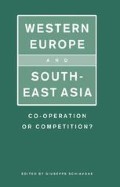For any judgment on Soviet political initiatives and trends in Asia in the last decades, we have to pay special attention to seven elements, which exert a deep influence on the position of the USSR (also as the heir of Tsarist Russia) in Asia:
Access this chapter
Tax calculation will be finalised at checkout
Purchases are for personal use only
Preview
Unable to display preview. Download preview PDF.
Notes
S. Fagiolo, La Russia di Gorbaciov, Rome, 1988, p. 122 ff; C.E. Black in I.J. Lederer (ed.), Russian Foreign Policy, New Haven and London, 1962, p. 3–37 passim.
C. Keeble (ed.), The Soviet State, London, 1985, p. 157.
H. Carrère d’Encausse, L’Empire éclaté, Paris, 1978, passim; G. Simon, Nationalismus und Nationalitätenpolitik in der Sowjetunion, BadenBaden, 1986, passim; R. Pipes, The Formation of the Soviet Union, Cambridge, 1964, passim; A.L. Weeks in Journal of Defense Diplomacy, 5, n. 7, 1987, p. 28–32.
R. Medvedev, La democrazia socialista, Firenze, 1977, p. 330.
K. Fritsch in Osteuropa, 33, 2, Feb. 1983, p. 125–140.
Zaki Laidi in Le Monde, Feb.24, 1988.
R. Holbrook in Foreign Affairs, 64, 4, p. 744.
Gelman in Adelphi Papers, 217, Spring 1987.
L. Valsalice (Ferraris) in Civitas, n. 1, gennaio 1972
G. Segal, Sino–Soviet relations after Mao, Adelphi Papers 202; Griffith in Problems of Communism, 32, March–April 1983, p. 20.
M. Dassu’, La frontiera difficile, Roma 1986, p. 237.
T. Kataoka in Problems of Communism, 33, March–April 1984, p. 1–16.
H. Vogel (Hrsg), Die sowjetische Intervention in Afghanistan, BadenBaden, 1980; Z.Khalizad in Problems of Communism, 35, Jan–Feb. 1986, p. 1–20.
Statement of Mr. Gulguddin Hekmayer in Le Monde, March 16, 1988; Haller in Die Zeit, March 11, 1988.
U. Halbach, ‘Perestrojka und Nationalitatenproblematik’ in Berichte des Bundesinstituts fÜr ostwissenschaftliche und internationale Studien, n. 38, 1987.
P.J. Opitz, Die chinesische Aubenpolitik in den achtziger Jahren, Akademie fÜr politische Bildung Tutzing, 1, Nov.1984.
H.J. Mackinder, Democratic Ideals and Reality, London, 1904.
Editor information
Editors and Affiliations
Copyright information
© 1997 Palgrave Macmillan, a division of Macmillan Publishers Limited
About this chapter
Cite this chapter
Ferraris, L.V. (1997). The Soviet Union in Asia: Conflict and Co-operation. In: Schiavone, G. (eds) Western Europe and South-East Asia. Palgrave Macmillan, London. https://doi.org/10.1007/978-1-349-10262-4_17
Download citation
DOI: https://doi.org/10.1007/978-1-349-10262-4_17
Publisher Name: Palgrave Macmillan, London
Print ISBN: 978-1-349-10264-8
Online ISBN: 978-1-349-10262-4
eBook Packages: Palgrave Economics & Finance CollectionEconomics and Finance (R0)

